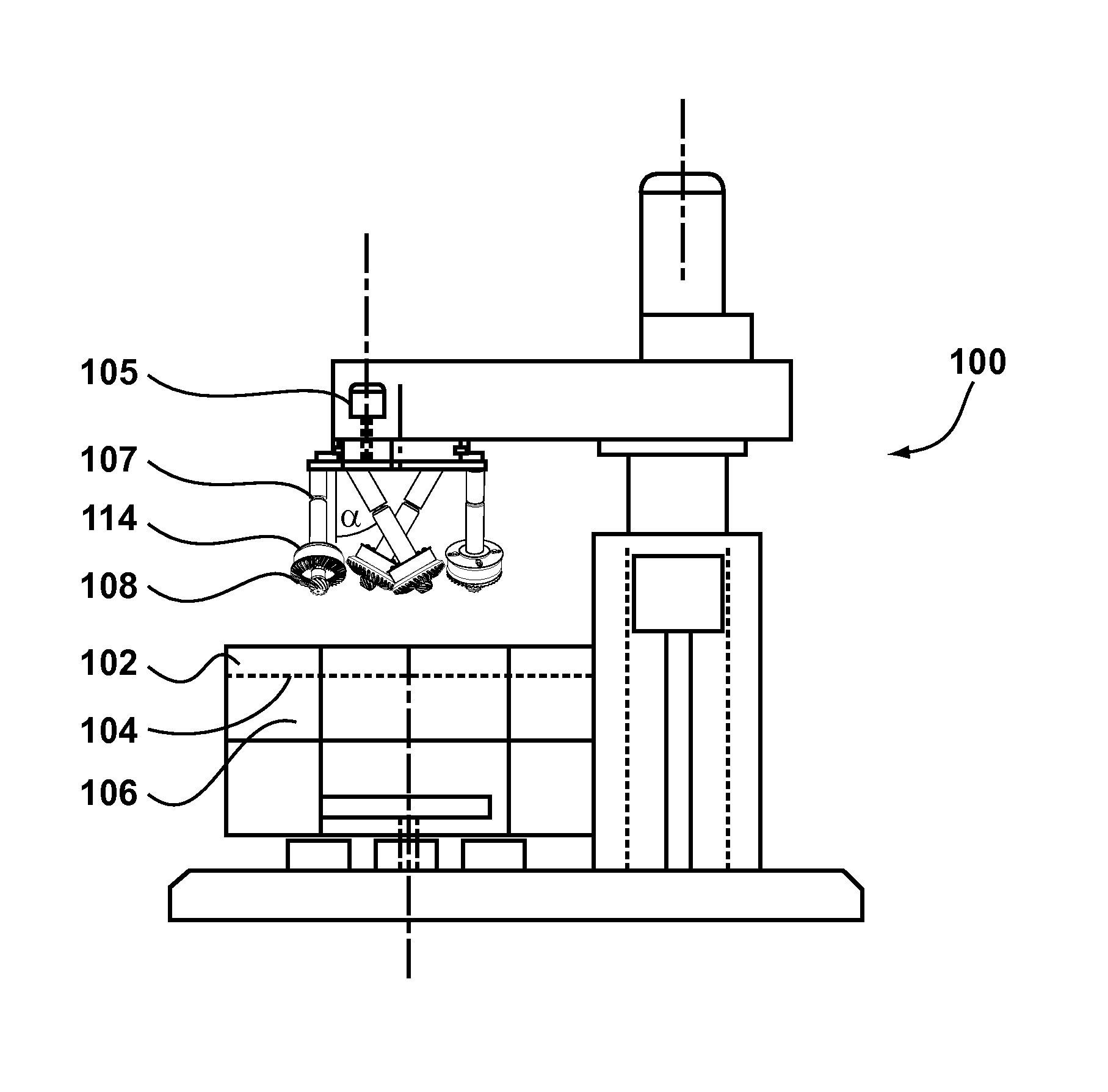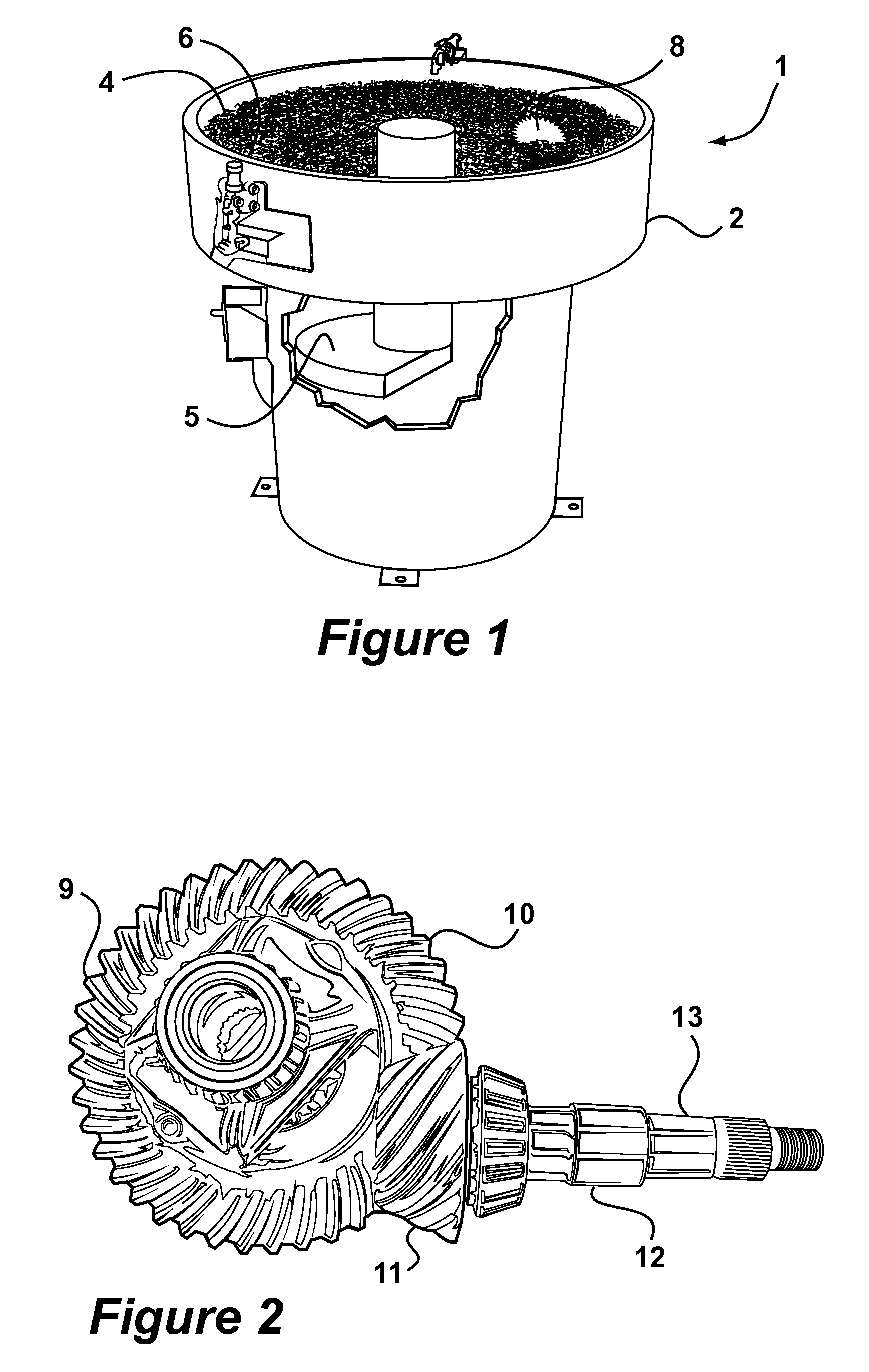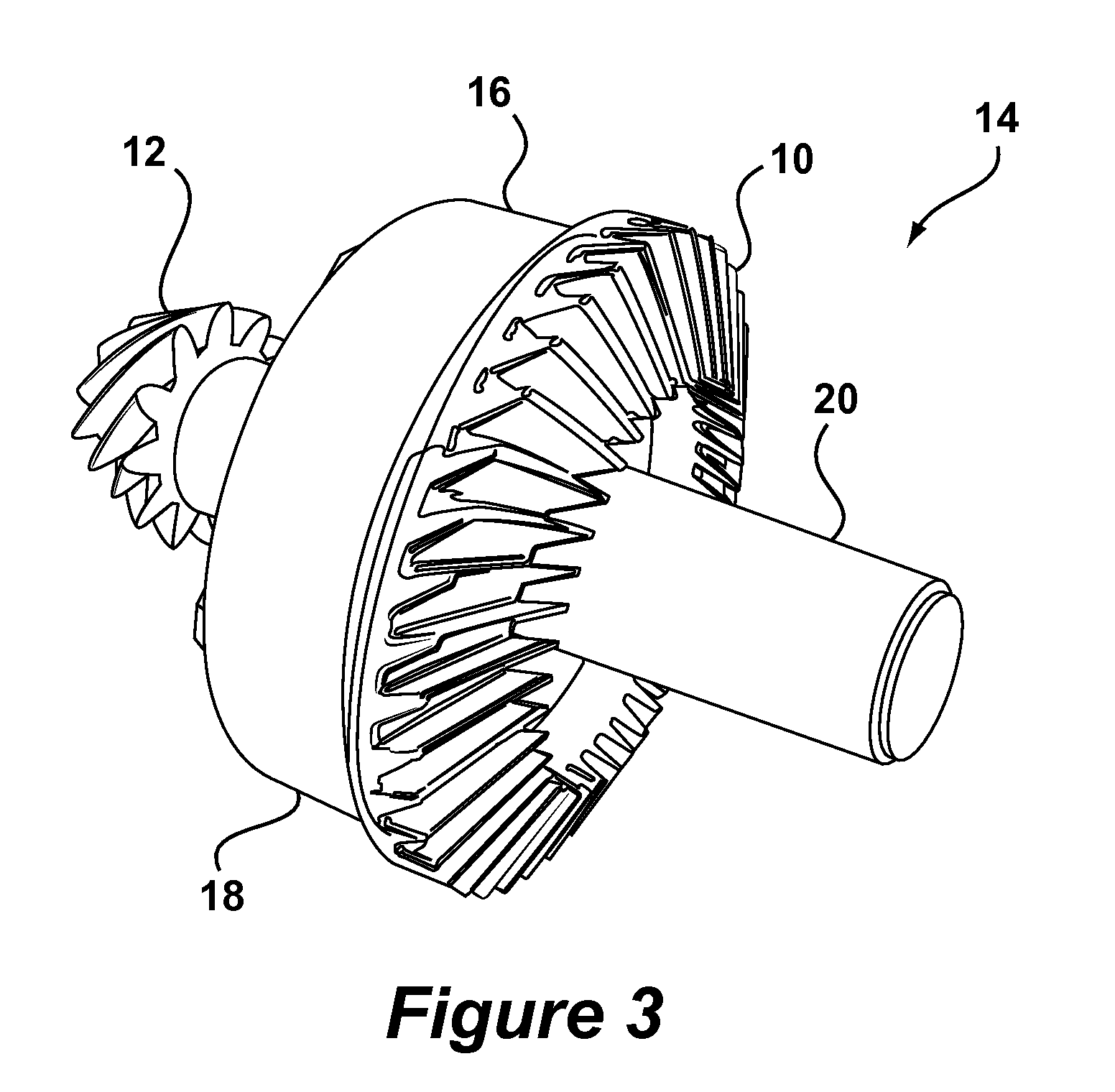Magnetic fixture
a technology of magnetic fixture and fixing plate, which is applied in the direction of grinding drive, grinding machine components, manufacturing tools, etc., can solve the problems of inability to achieve the production volume required, process is generally unacceptably long for integration into the production line environment, and is too slow for hardened engineering components such as case-carburized gearsets. to achieve the effect of preventing knocking, simplifying subsequent identification, and facilitating connection and disconnection
- Summary
- Abstract
- Description
- Claims
- Application Information
AI Technical Summary
Benefits of technology
Problems solved by technology
Method used
Image
Examples
first embodiment
[0053]FIG. 3 shows a fixture 14 according to the invention. The fixture 14 comprises a body 16 formed of a disk 18 and a shaft 20 onto which the ring 10 and pinion 12 are respectively connected. In the depicted embodiment, the body 16 is formed of a single piece of Delrin™.
[0054]FIGS. 4A and 4B show exploded perspective views of the fixture 14 of FIG. 3 from two different angles. As can be seen, the disk 18 has a top face 22 and a bottom face 24. Bores 26 in the top face 22 extend through the disk to a distance of about 1.5 mm from the bottom face 24. Magnets 28 are received within the bores 26, which are closed by plugs 30 of Delrin™. The magnets 28 are formed of neodymium material (Nd2Fe14B) and each can exert a retaining force of around 4 Kg when acting through the material of the bottom face 24 of the disk 18 in this manner. Five bores 26 are spaced around the circumference of the disk 18, of which four can be seen in the Figures. Furthermore, a central bore 36 through the shaft...
second embodiment
[0057]In an alternative (non-illustrated) embodiment, the fixture may be allowed to tumble freely in a bowl or tub. This may be the case where impact between workpieces is not a significant issue but nevertheless, pairing of matched components is desired. In the case of a freely tumbling version, it could also be desirable to locate both a ring and a pinion on the same face of the fixture in order to promote tumbling. Such an arrangement is shown below in the context of the invention.
[0058]A second embodiment of the invention is shown in FIG. 6 for use in drag-finishing. In the description of this embodiment, like reference numerals preceded by 100 will be used to denote similar features.
[0059]According to FIG. 6, there is shown a drag-finishing machine 100 having a bowl 102 containing non-abrasive media 104. A drive arrangement 105 causes rotation of arms 107 to force workpieces 108 through the media 104. Each workpiece 108 is carried by a fixture 114. The arms 107 rotate together ...
PUM
| Property | Measurement | Unit |
|---|---|---|
| Ra | aaaaa | aaaaa |
| distance | aaaaa | aaaaa |
| force | aaaaa | aaaaa |
Abstract
Description
Claims
Application Information
 Login to View More
Login to View More - R&D
- Intellectual Property
- Life Sciences
- Materials
- Tech Scout
- Unparalleled Data Quality
- Higher Quality Content
- 60% Fewer Hallucinations
Browse by: Latest US Patents, China's latest patents, Technical Efficacy Thesaurus, Application Domain, Technology Topic, Popular Technical Reports.
© 2025 PatSnap. All rights reserved.Legal|Privacy policy|Modern Slavery Act Transparency Statement|Sitemap|About US| Contact US: help@patsnap.com



